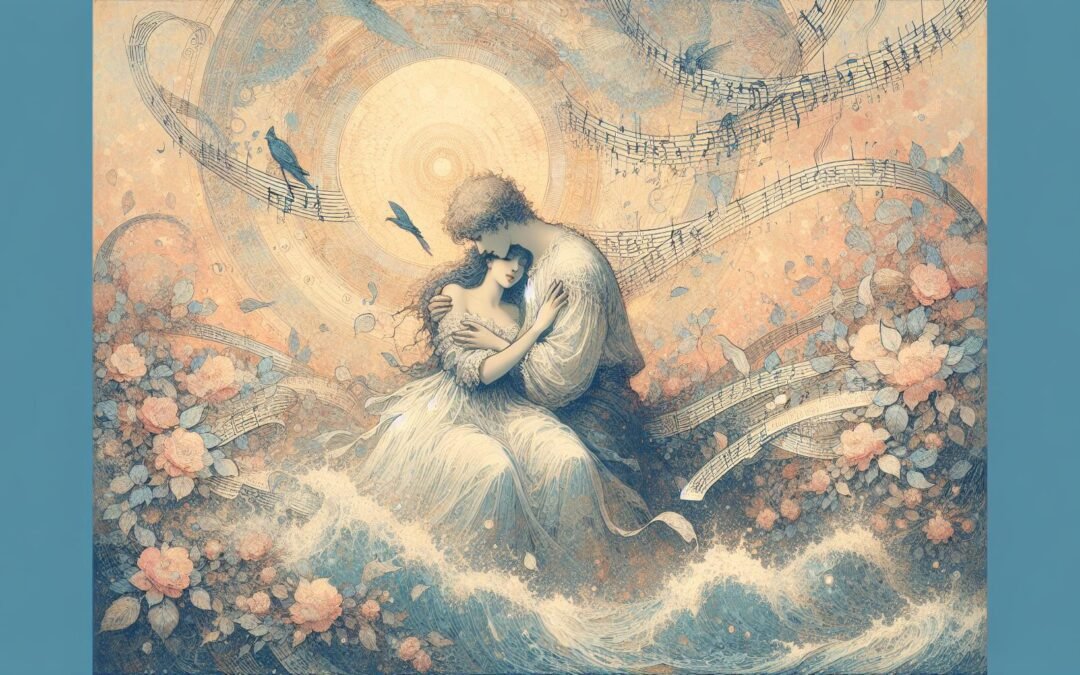Romantic poems for her to make her cry have fascinated generations with their persistent allure and intricate emotional palette. The impact of these works emerges not from exaggeration but from laser-sharp attention to personal resonance. An exquisite example can be found within Love Poems For Your Boyfriend That Will Make Him Cry, where tenderness and yearning are intertwined with sophisticated devices that yield profound reactions. Those lines etched by longing provide a mirror for private ache, binding the reader’s experience to the poem’s world. When seeking romantic poems, it helps to understand the literary tradition and the artistic choices that make these verses so disarmingly affecting.
Romantic Poems for Her to Make Her Cry: Origins
Contemporary poems lift their roots from a long historical evolution, shaped by the voices of ancient lyricists and the transformative visions of Romantic and modern artists. Successful poems rely on cumulative literary experiment and psychological insight to produce reactions that go beyond admiration and enter the realm of catharsis. Attention to these poetic techniques unlocks an appreciation for why well-constructed verses stir tears and spark lasting memory. The best romantic poems, whether classical or new, unite form and emotion so that a single phrase can summon the reader’s private passions into the open.
Historical Landscapes of Romantic Poetry
The lyric tradition began in ancient Greece with Sappho whose works crystallized desire and vulnerability within direct personal address. The Roman poet Catullus extended these ideas, introducing sharp contrast between hope and disappointment. Medieval troubadours in southern France introduced codes of courtly love, idealizing unattainable longing and ritual declarations of fidelity that echo in modern works. Moving into the Renaissance and Enlightenment, Petrarch and Shakespeare used the sonnet as a new structure to explore shifting boundaries of devotion, jealousy, and loss.
The Romantic period marked a major transformation, prioritizing the private self and a heightened attention to emotional authenticity. Poets including Wordsworth and Coleridge placed profound feeling at the forefront, while the Victorian era introduced psychological depth and ambivalence into the genre. Elizabeth Barrett Browning, whose “Sonnets from the Portuguese” set a new standard for sincerity, laid groundwork for later innovation. The passionate Werther of Goethe’s novel inspired a surge in love’s literary representation, and Byron’s Childe Harold and Don Juan gave the heroic yet vulnerable lover a global audience.
Modernists, diverging from predictable forms, shattered patterns and infused love poetry with ambiguity and irony while retaining its core purpose: articulating the complexity of connection and desire. Innovative voices including H.D. and E.E. Cummings navigated between abstraction and sharp moment-by-moment honesty, deploying experimental syntax to reflect both rupture and longing. Tagore from Bengal introduced spiritual tenderness, widening the global vocabulary of love. These developments ensured that the heritage of romantic poems remains vital and mutable, reflecting new social and psychological realities. Those seeking poetic traditions that span time can also visit Love Poems For Wife To Make Her Cry for additional examples.
Artistry and Structure: Devices That Elicit Tears
Powerful romantic poems for her to make her cry rely on more than sentiment; they employ specific literary tools to shape the reader’s emotional engagement. Vivid imagery, for instance, draws feeling from abstraction into sensory clarity. When a poet writes of “rain on the empty pillow,” the vision becomes immediate and heartfelt. Rivers, twilight, withered gardens and other recurring motifs connect personal experience to shared symbols, multiplying the reader’s sense of recognition.
Sound and rhythm serve an equally vital function. A carefully chosen rhyme sets up echoes that reinforce longing or sorrow. Poets use alliteration to create hypnotic momentum or to anchor grief in a particular phrase. Lines like “remember me when no more day will dawn” acquire additional gravity through their metrical patterns. To see this device in action, Love Poems To Make Her Cry offers prime examples.
Repetition possesses unique power in this tradition. When a single phrase returns at the close of every stanza, or when the poem builds on cumulative images, the feeling intensifies. This creates a rhythmic cycle mirroring longing, regret, or hope. Refrains make readers feel enclosed within the emotion, turning the poem’s narrative into an active personal memory. Close attention to formal choices—sonnet structures, free verse, or carefully balanced narrative poems—adjusts the tempo of emotional build-up. Consider Poem For Her To Make Her Cry for structural variety.
Emotion, Vulnerability, and Psychological Impact
Romantic poems for her to make her cry touch raw places because they create safe space for vulnerability. A writer’s honest acknowledgment of loss or yearning allows the reader to lower their defenses and recognize dormant feelings. Tears are not solely the effect of overt sadness; a line that names a private hope or past wound can prompt release. As documented in Poems For Her That Will Make Her Cry, the strongest responses come when poetry aligns precisely with a reader’s unspoken experience.
Empathy plays a decisive role. When the poet bares the self, whether recalling a parting, whispering a memory, or confessing regret, the reader’s mind enacts the event in miniature, blurring lines between self and other. Poems serve both as permission and as prompt for private reflection. These texts open space for grief but also for hope, transforming the act of reading into a means of healing. Cultural and psychological research has begun to confirm that gender may affect how these poems are received. Women, in many societies, are more likely to value emotional attunement, making them especially responsive to poems that honor openness.
Context matters too. In moments of personal transition—grief, celebration, or reconciliation—a romantic poem can provide language for feelings that resist normal conversation. Poems gain additional power when read aloud, their sound patterns amplifying emotional effect. To observe the influence of delivery and timing, review samples at Short Romantic Poems For Her To Make Her Cry.
Themes of Longing, Yearning, and Devotion
Unrequited love provides a persistent theme in this genre. When the speaker cannot reach the beloved, tension grows, and every remembered moment acquires new urgency. The impossibility of closure enlivens sensation, creating what some have called exquisite pain. These scenarios help explain why so many classic romantic poems induce tears; the emotional stakes are magnified by absence and loss.
Devotion and adoration function as sources of both power and vulnerability. The beloved is rendered extraordinary, sometimes in spiritual or mythic terms. Adoration risks exposing the self to disappointment but also promises transformation. The reader witnessing this elevation feels both the hope and the peril of surrender. In this way, romantic poems for her to make her cry draw upon a web of emotional risks that feel authentic and immediate. Surveys collected in Love Poems For Her To Make Her Cry illustrate this process.
Separation and grief underpin some of the genre’s most potent texts. Whether the distance is physical (caused by travel or mortality) or emotional (born of betrayal or silence), poets transform absence into tangible experience. Mourning, when shaped through clear imagery and simple diction, can build a bridge across the void. Poems that honor hope and reunion also find their place here, using memories of closeness or dreams of solace to ease the overwhelming sense of longing.
The Idealization of the Beloved and the Limits of Fantasy
A common device across time is the elevation of the beloved to almost mythic stature. Comparing a loved one to angels, works of art, or dream-figures, the poet extends praise but also risks the illusion of perfection. This tendency to construct fantasy from reality remains a widely studied phenomenon. Readers are invited to share in the act, sometimes recognizing their own projection and sometimes longing for the impossible.
Although idealization can be destabilized by self-awareness, it remains central to the experience of many romantic poems for her to make her cry. Modern writers challenge the trope by exposing its weaknesses or revealing how fantasy can founder against real human complexity. Certain poems examine the collapse of the ideal, allowing readers space for both disappointment and renewed appreciation for genuine connection.
Transitions between hope, idealization, loss, and reunion provide a rich terrain for those seeking to understand the genre’s persistence. The variety of themes ensures continued innovation and deepening meaning. If interested in further exploration, browse the anthology at Love Poems To Make Her Cry.
Pacing, Diction, and Accessibility
Careful poets use tone and wording to welcome as many readers as possible while upholding emotional resonance. Accessibility increases when poets clarify unfamiliar references and ground abstraction in tactile imagery. Balancing complex feelings with direct statement challenges both beginner and advanced writers. Selecting simple phrasing, especially at moments of emotional climax, allows the power of the theme to shine.
Interest in romantic poems for her to make her cry now extends across cultures and platforms. Modern anthologies, websites, and open mics revive these forms for new audiences, adapting old themes for contemporary situations. As seen in Love Poems To Make Her Cry, variety and adaptation ensure poems lose neither urgency nor relevance.
Some resources help with further exploration and study, including respected curations available through Poetry Foundation and detailed analysis from Poets.org. These sites provide guidance for those wishing to encounter both masterworks and emerging voices, expanding the reach of the tradition for modern readers.

